geistreiches / Getty Images
Carpenter Bee Survey
24.07.2023 - 12:06 / hgic.clemson.edu
***North Carolina State University is doing research about eastern carpenter bee management on private property. You can help by providing feedback in their survey, which should take just 10 to 15 minutes to complete. This information will help them develop improved management options for the future. To participate in the survey, see Carpenter Bee Survey.
Spring is here and so are the carpenter bees. Carpenter bees are very active from early spring through summer around houses and other wooden structures. These insects earn their name because they bore one-half inch wide holes that appear to be perfectly round on exterior wooden surfaces. They naturally nest in dead trees and woodpiles, but they also bore into exterior wood on buildings, fences, decks, and outdoor furniture. Homeowners are often frightened by these pesky black bees that fly erratically around their homes. The male carpenter bee is very territorial and protects its nesting sites, hovering nearby and attacking intruders. Although the male behaves aggressively, it does not have a stinger, making it harmless. The female has a stinger but is not defensive and rarely stings. Males have a white or yellow blaze on their face, while females have a dark face.
Homeowners often mistake carpenter bees with bumble bees because of their similarities in size and appearance. Actually, there are many species of bumble bees and carpenter bees, each with unique color patterns, but most carpenter and bumble bees are yellow and black. The quickest way to tell a carpenter bee from a bumble bee is by looking at its abdomen. Carpenter bees have few hairs on the abdomen, making them look “shiny,” while bumble bee abdomens are very hairy and “fuzzy” looking. It is important to
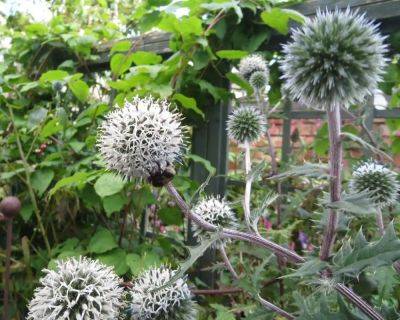
Six on Saturday: Bees and Blooms
…well, one bee, although there were several on the echinops above, E Arctic Glow’, when I was trying to take a photograph, but they wouldn’t stand still or long enough! The garden, is, however, currently swarming with bees and butterflies, which is good to see.
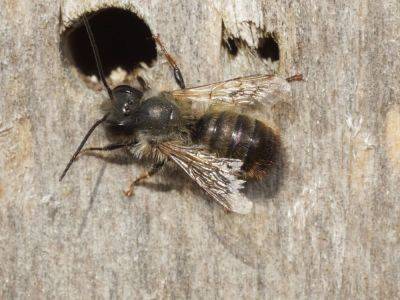
All About Mason Bees – What Gardeners Need To Know
The solitary mason bee is a North American native pollinator that deserves more attention and respect. Honeybees do a lot of pollinating, but they are not native, their populations are in decline, and they are not as efficient at pollinating as some other species, including mason bees. Learn more about this humble bee and how to support it in your garden.
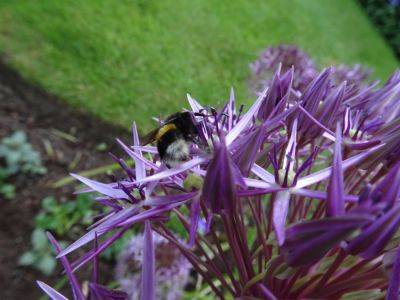
Beat Garden Blues and Bee Happy
Rumour that Bees are in terminal decline is not borne out in my garden this year. The Bees seem very happy on the blue flowers and I am happy as it gives me an excuse to show some more blue photographs (of flowers!).
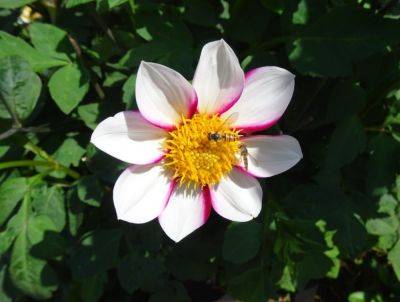
Bee Waspish – July Flies By
Carnations defy the single flower rule attracting as many insects as the dahlias, poppies and blackberries
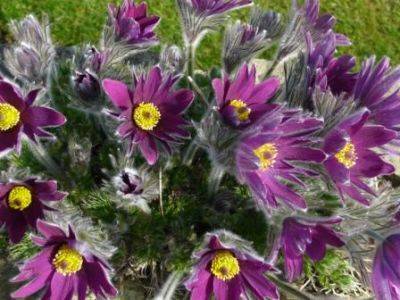
Special Seed Sowing Survey
I thought I would just list some special tactics to try increase successful sowing activities. After all ‘Tis the season for sowing summer annuals and so on’.

Weeds for the Bees
Are you frustrated because there are dandelions and other weeds in your lawn? Did you know that dandelion flowers provide one of the first springtime sources of pollen for bees, butterflies, and other pollinating insects?
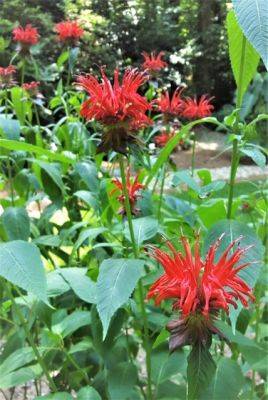
Monarda (Bee balm)
Our family now has a new favorite garden perennial plant. Ever since our ‘Jacob Cline’ Monarda (Monarda didyma ‘Jacob Cline’) came into bloom, it has been the most gorgeous flower we have tried in our landscape. Ruby-throated hummingbirds simply flock to its scarlet red flowers for nectar. This cultivar towers above the other perennials, as it stands about 4 feet tall. It requires some support in partial shade, so we use large, round, wire plant supports that were installed when the plants were just coming up for the spring; then, they grow up through these supports. Monardas grow best in half to all-day sunlight and do prefer a somewhat moist soil. ‘Jacob Cline’ is a powdery mildew resistant cultivar, which is a fungal disease that ruins the foliage of many monardas.
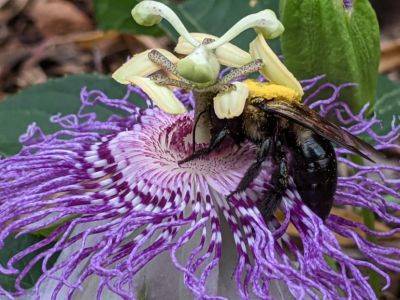
Pollinator Week – Bee Discoveries
During pollinator week (June 20 -24), I spent time hunting for native bees in the South Carolina Botanical Garden. Native bees are powerhouse pollinators and of critical importance to plant life and our food supply. Over 4000 species are native to North America, with perhaps a thousand active in the Southeast, still a rather daunting number! But you must begin somewhere, so I set out with my camera to see who was in the garden!
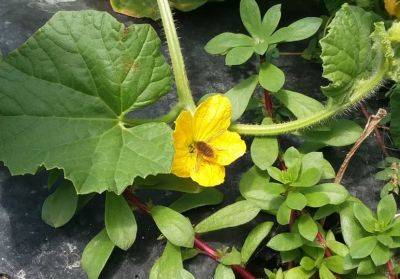
What Is It? Wednesday – Bee Fly
This little critter looks a lot like a bee (it’s yellow, fuzzy, and foraging flowers), but if you look closely, you’ll see it has only one pair of wings (bees have two). This feature distinguishes this as a fly, specifically a bee fly (family Bombyliidae). Though they look similar, these flies grow up very differently from bees. Bee flies are parasitic and develop on the larvae and pupae of other insects, such as wasps, beetles, butterflies and moths, grasshoppers, and other flies.


